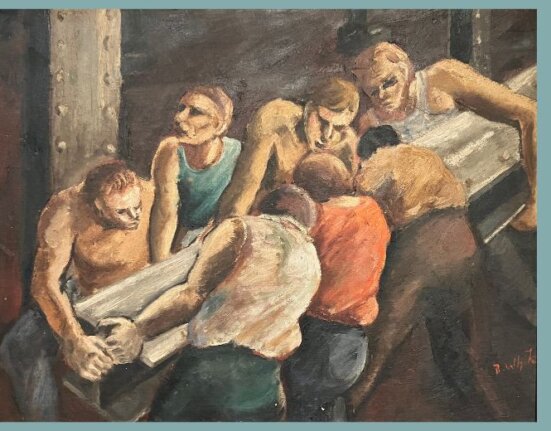Eileen Boris’ meticulously researched and detailed book, Making the Woman Worker: Precarious Labor and the Fight for Global Standards, 1919-2019, reveals some enduring challenges for women globally to actualize their full labor rights. There are three themes in the book that resonate for me as someone who works on transnational issues impacting women workers in Bangladesh and South Asia as well as low wage immigrant workers in the United States particularly in the South Asian diaspora.I discuss these points as they relate to Bangladeshi rural and domestic workers.
- First, the persistent reluctance to view the home as a site of labor and therefore, subject to regulation;
- Second, the need for socialist-feminist research to challenge the dominant economic development discourse that promotes industrialization, as shown by ILO’s program centering on rural women, and to build a network of researchers connected to the Global South; and
- Third, it is difficult to navigate and achieve rights within the ILO/UN system without mass-based mobilization and formation of transnational networks in collaboration with institutional “insiders.” Further, without continued mobilization around the conventions passed, these newly created labor rights would not have much impact on the day to day lives of women workers.
This is part three of our roundtable on Eileen Boris’s new book, Making the Woman Worker: Precarious Labor and the Fight for Global Standards, 1919-2019, organized by Emily E. LB. Twarog. We started on Sunday, International Women’s Day, with a contribution from Katherine Turk, and we heard from Naomi Williams yesterday. Keep checking back tomorrow and Thursday for more.
Home as a Site of Labor
The reluctance to view the home and other non-industrialized sites as workplaces marginalizes rural women. According to the 2011 FAO report on Women in Agriculture, women make significant contributions to the rural economy. UN figures show that women make up 43% of agricultural labor force. Almost 70 percent of employed women in South Asia work in agriculture, as do more than 60 percent of employed women in sub-Saharan Africa.[1] However, much of that labor is unaccounted in part due to modernization theory of development. Modernization viewed European progress from feudal to capitalism and industrialization as the preferred course for newly independent countries like Bangladesh. As Boris details in Chapter 3 – Development, this view was adopted by many feminists. (89) I add that this view was also adopted by middle class feminists from the Global South, including in Bangladesh. Even if the agricultural labor of rural women was recognized, feminists aligned with modernization theorists believed that working outside of the home emancipated women from the patriarchy of home-life. In “Class, Patriarchy, and Women’s Work”, Cain, Rahman and Nahar found that the hours of work for men and women in rural Bangladesh were the same, except men devoted more of their time to income-earning work through wage work and crop production, whereas women allocated time to home production which included food processing such as rice, firewood gathering, food preparation, and cultivation of crops near their home.[2] Over time, as Bangladesh pursued economic development policies promoting industrialization, we see the profound impact on agricultural land which is fast diminishing. Globally, the rural population decreased by over 25%. This puts workers generally, and rural women worker in particular, in greater risk of precarious work conditions. As such, many rural agricultural workers, especially women, become landless or displaced from land repurposed for industrial zones. They become vulnerable to jobs as migrant domestic workers abroad or pushed to the urban areas to work in the garment industry. These jobs do necessarily provide better working conditions; they are mostly low paid. Instead of creating income earning opportunities in rural areas, Bangladesh promoted the garment industry as the path forward for economic development.

In this regard Boris’ assessment of women and development is accurate: “new feminism sought to bring women into employment without necessarily challenging the configuration of global economic inequalities.” (110) Without upending inaccurate notions that women in rural agriculture do not perform any labor, we see more women in these sectors fall behind in securing rights. Boris discusses the incremental chipping away of these ideas through the formation of the rural women’s program, focus on home-based work, and eventually, the passage of the convention on domestic workers’ rights. It was this gradual challenge to the idea that women performed labor in the home that in many ways set the stage for the domestic worker bill. Within this context, the formation of the Rural Development Programme (94) was quite radical because it challenged the development discourse on promoting industrial work in comparison to developing income earning potential in rural areas. It remained limited in its impact due to his focus on handicrafts. It failed to fully explore women’s income generating role in agriculture. There is however scope for the Rural Programme to focus on this. Some of these efforts are being done at the local level in Bangladesh by Nayakrishi Andolon (New Agricultural Movement of Bangladesh) where women are restored to their role of seed preservation, food processing and as entrepreneurs in organic poultry farming to name a few. In this regard, the 2018 landmark UN Declaration on the Right of Peasants and Other People Working in Rural Areas is an encouraging human rights development that acknowledges the particular issues of agricultural workers. This Declaration requires attention of feminists and labor advocates to ensure that the labor conditions of rural women workers are protected.
Socialist-Feminist Research
The role of socialist-feminist researchers like Maria Mies were critical to challenging the dominant development discourse and to creating a network of institutional insiders who aimed to decolonize the information that underpins ILO policy. Mies was among a group of researchers brought on by ILO, and whose work on patriarchy and capitalism was foundational to the study of women and development. The integration of women into national development policies, at a surface glance, may sound like a victory for women workers. However, the dominant neo-liberal economic policy of Bangladesh, and many countries in the global south promoted industrialization as the path forward because it would connect an otherwise rural and agrarian economy to the global economy. Gender mainstreaming justified neo-liberal, pro-capitalist ideas of development that promoted global capitalism. It promoted the garment worker as the iconic figure of the emancipation from the patriarchal-feudal rural work and domestic work. However, such a development policy was at odds at efforts to organize rural agricultural workers, home-based workers and domestic workers. It is thus not surprising that Bangladesh has yet to ratify ILO Conventions 177 (Home Work) and 189 (Domestic Workers). If garment and other industrial work was desirable for women to achieve economic justice, regulations of home-based and domestic work was unnecessary because it was not seen as viable future work for women. Employing a participatory model of research, the Programme commissioned field work and enlisted scholars from the Global South. (125) While the initiative to decolonize research and to empower rural women was overshadowed, we need to return to the focus begun by many of these feminist researchers as displacement and land grabs increase. For those in the academy, we need to better understand the role of gender, labor and land issues from the ground up.
Impact of Mass Mobilization on ILO Conventions and Global Labor Rights
Boris’ book underscores that local organizing with transnational advocacy networks in partnership with sympathetic researchers and scholars can lead to the development of new labor rights by navigating the formal ILO/UN system. The Self Employed Women’s Association (SEWA), an NGO of self-employed women in India, worked within ILO/UN systems to push for rights for home-based workers under Convention 177 with the support of insider researchers. As Boris highlights, this is a successful example of creating new global labor rights for women workers. Without mass-based mobilization, institutional “insiders” who are sympathetic to the demands of grassroots women organizations can find the formal international human rights systems difficult to navigate. The example of the domestic worker mobilization in the United States and throughout the globe was another example of building on SEWA’s success and the insider researcher/NGO strategy. While Boris focuses on the formal leadership of US-based National Domestic Workers Alliance (NDWA), numerous domestic worker/multi-racial organizers like Nahar Alam, Carolina de Leon, Erline Brown and Christine Lewis among many others were instrumental to mobilizing for Bill of Rights in New York which formed the basis for the Convention 189. These women were domestic workers and working-class women who organized at the local level and were active in earlier formations of NDWA such as Domestic Workers United.[3] Specifically, Nahar Alam was one of the first women who organized South Asian domestic immigrant workers in New York City having been a domestic worker herself. Boris is right that “national domestic worker formations were essential for transnational action.” Those formations were made possible due to the leadership of working-class women who often get invisibilized in any historical account. Yet, it is at this hyper-local and micro-level that organizing happens. Not surprising, as we see with SEWA and NDWA, middle class women who occupy a formal role in these non-profit/non-governmental organizations become more known for this work. The pivotal role that working class women have played in securing these rights must continue to be named and uplifted in books that aim to recount the history of women workers.

The limits of this ILO/UN insider/NGO approach is revealed when it comes to actualizing labor rights. When those rights are articulated such as Conventions 177 and 189 on home-based work and domestic workers, respectively, organizers and allies need to go back to their countries and mobilize around their ratification and implementation through national legislation. We can already observe this organizing happening among domestic worker groups in Bangladesh. What is most exciting is to see the organizing by working class women workers in other sectors. Arefa Aktar, a former garment worker and organizer with National Garment Workers Federation, is part of a collective effort to organize domestic workers and to demand that Bangladesh ratify Convention 189. Funding and other institutional barriers make this work difficult, but she has been continuing. She hosts monthly meetings to inform domestic workers of their rights. There is similar organizing to have Bangladesh ratify the newest convention, ILO 190 that prohibits gender-based violence in the workplace. Recently, Nazma Akter, the president of Somolito Garment Sramik Federation submitted an open letter to the Bangladesh Prime Minister urging the ratification of ILO Convention 190. Ultimately, it is the mobilizing before and formation of worker groups at the national level, and then the mobilization after a convention is passed that is most critical for the success of the labor rights passage. Moreover, such an approach is most likely to directly impact women at the grassroots level. This suggests that more resources and funds are needed to support organizing and these workers formations. The ILO’s Rural Programme’s collaboration with grassroots groups, and participation in research were the beginning of such a grassroots approach. However, more needs to be done.
Boris’ book spans a centenary of ILO’s work organized around different themes. Now, as we look at the future of work, we must keep rural women workers and domestic workers central to any path forward because they challenge dominant ideas of labor and economic development that continue to marginalize poor women. We must name and account for working class women’s role in the creation of these standards, those named and numerous unnamed. And we must support grassroots formations because this ensures the path forward to ensure labor standards in the years to follow.
Come back tomorrow for UNITE HERE researcher Sarah Lyon’s roundtable contribution, and start here if you missed previous installations.
[1] http://www.fao.org/publications/sofa/2010-11/en/
[2] Cain, M., Khanam S.R., Nahar, S. (1979). Class, patriarchy and women’s work in Bangladesh. Population and Development Review, 5(3), 405-438.
[3] Sujatha Fernandes, Domestic Workers at a Crossroads, https://www.dissentmagazine.org/blog/domestic-workers-at-a-crossroads, Dissent Magazine, August 19, 2015.






